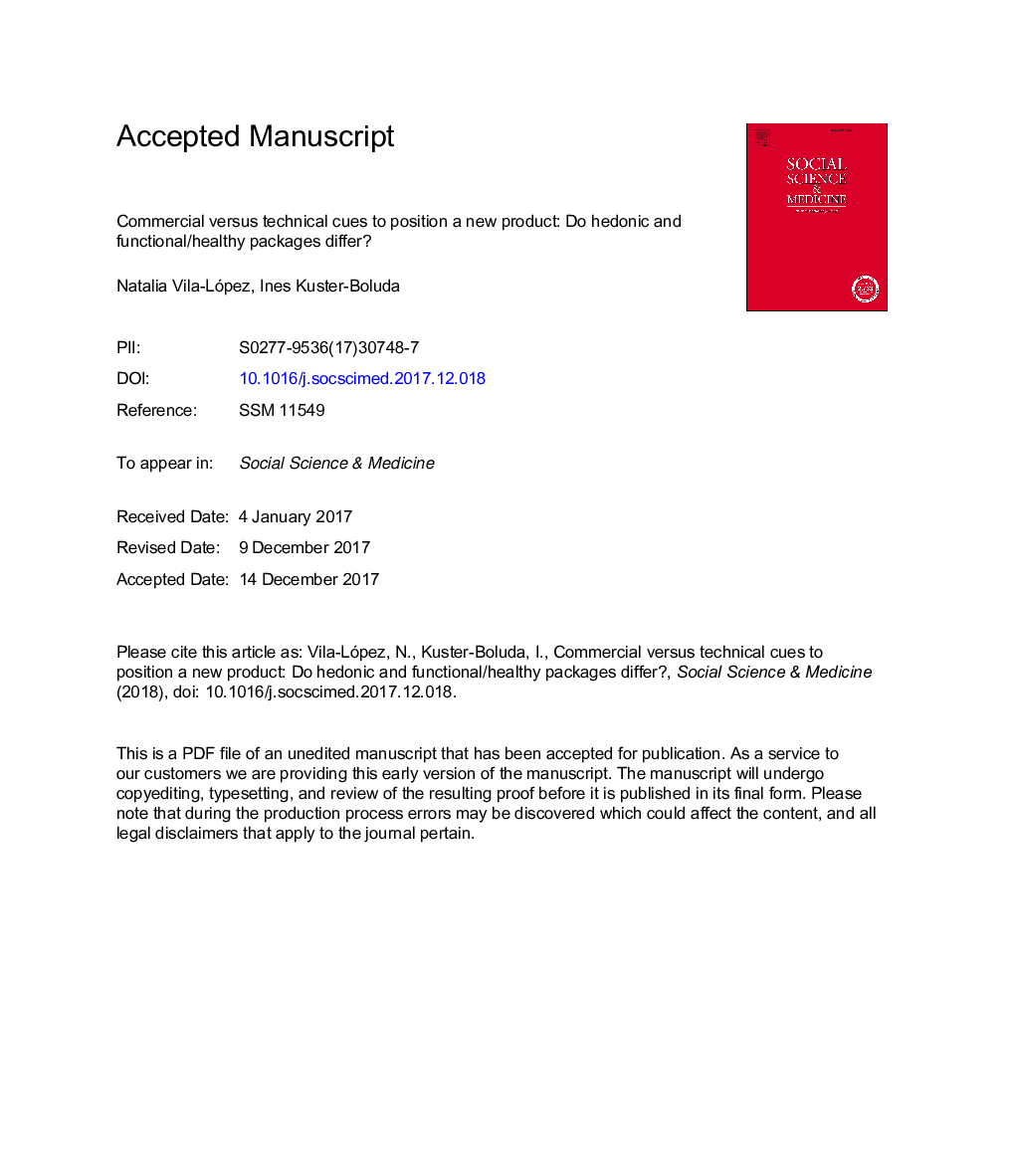| Article ID | Journal | Published Year | Pages | File Type |
|---|---|---|---|---|
| 7328614 | Social Science & Medicine | 2018 | 38 Pages |
Abstract
An experimental design was defined to reach both objectives. Two packaging attributes were manipulated orthogonally to introduce greater variation in people's perceptions: a visual cue (the color) and an informative cue (the claim/label). A third variable was introduced: hedonic (candy bars) versus functional/healthy products (juice with fruit and milk). In a laboratory, 300 young consumers chose and evaluated one of the different packages that were simulated (using different colors and labels). Our results show that both kinds of attributes are significant, but visual cues were more strongly associated with young consumers' positive attitudes towards the product and their intention to buy than technical cues. Results do not differ between the product categories.7.
Related Topics
Health Sciences
Medicine and Dentistry
Public Health and Health Policy
Authors
Natalia Vila-López, Inés Küster-Boluda,
